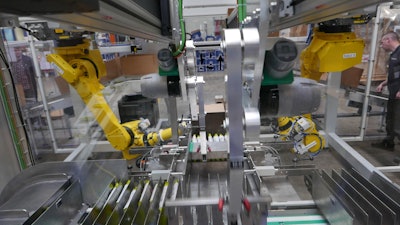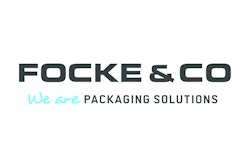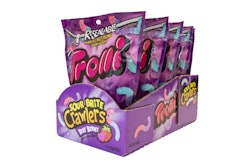For some packaged products, even the most delicate touch of a pick-and-place robot can result in product damage. This was the challenge Chicago-based Assemblers, Inc., a contract manufacturer/packager and repacker of food products, faced in 2016 when selecting an automated case-packing system for bagged snack foods.
Assemblers is a family-owned business with two facilities in Illinois that offer primary and secondary snack food manufacturing, liquid filling, and a range of primary and secondary food packaging services. It handles a wide range of products, including snack foods, water enhancers, refrigerated items, and confectionery products, among others.
For contract packagers such as Assemblers, investing in automation isn’t always practical. To efficiently handle ever-changing job sizes, packaging formats, and product counts, manual labor offers the most flexibility. But when the company locked in a regular customer with consistent packaging needs, it looked into robotics for the first time.
The customer’s product is a snack food similar to a potato chip, but not identified as such by CEO & President Joel Rosenbacher, who is committed to customer confidentiality. Assemblers handles the snack at its Chicago location, a 500,000-sq-ft plant with 20 packaging lines. There it manufactures the snack, packs it in single-serve and full-size pillow packs, and loads the bags in into shipping cases.
Initially, the bags were hand-packed into the cases and sealed with semi-automatic case closers. According to Rosenbacher, the switch to a robotic case packer was ultimately done to save on labor costs. “We knew we were going to be consistently producing this product,” he says. “So once the dust settled, and we were running the same thing over and over, the process appeared to be a very good candidate for automation.”
In viewing several traditional robotic case-packing systems handling products equally as fragile as potato chips, Rosenbacher says he saw high failure rates. “Some of the robotic arms were popping bags,” he says. “So, if a bag perhaps had too much air in it, when the arm came down, it came down too hard, and it broke the seal of the bag or did damage to the bag.
“Our product needs to be gently handled, and we didn’t want to have any kind of failure. We needed a system that could gently load the product into the case.” Assemblers also was looking for a machine that could operate at speeds to 200 bags/min.
What the company chose was Focke & Co.’s HFP (Highly Flexible Packer) Twin, a case-packing system that uses two Fanuc M-710iC/70 six-axis robots to move the cases, rather than the products. The HFP can handle RSCs, HSCs, and trays with or without lids. It can also load cases from the top or from the side. Assemblers is using the system with the side-load option, filling a number of case sizes measuring from 7 x 7 x 7 in. to 23 x 20 x 19 in., with anywhere from 12 to 28 bags of product. The company’s setup also includes a Focke case erector and case closer.
The HFP Twin handles packs coming from four bag fillers, designated 3, 4, 5, and 6. As they exit the fillers, each in their own lane, bags from fillers 3 and 4 merge into one lane, and bags from 5 and 6 merge into another. The two lanes are each equipped with an Ishida Seal Tester that checks for proper seals and correct separation of the bags, with defective bags discharged from the lanes. Following inspection, the two lanes merge into one that leads to the infeed of the case packer, which sends bags to either one of the two case-loading pushers/robots.
As bags are conveyed into the case packer, a pocket upending device upends the bags and delivers them to a collator, where they are grouped and positioned in front of a pusher device. Meanwhile, the case erector takes a case blank from a magazine, erects the case, tapes the bottom flaps closed, and tips the case onto its side. In this position, it is delivered by conveyor to the uptake position of the case packer where the robot picks the open case and positions it in front of the main pusher.
Next, the pusher moves the previously collated layer of bags into the case, with a tongue on the pusher supporting the layer as it is loaded. As the pusher moves back to its former position, the case is indexed by the robot to accept the next layer of product. This operation repeats itself, layer by layer, until the case is full. At that point, the robot moves the case to a discharge conveyor, after which it is taped closed.
According to Rosenbacher, the case packer features tool-less changeover, making it easy to move from one job to the next. “There are some parts that need to be manually snapped out and snapped back in, and then you have to change some of the programming,” he says. “So it takes one person about 15 minutes to do a changeover.”
Assemblers installed the case packer in June 2016, with Rosenbacher making the investment in the machine with the assurance of a long-term contract from the customer. While he won’t give an exact number, Rosenbacher says replacing manual case packing of snack bags with the automated system has “greatly reduced the number of operators.” He adds, “It has been worth the return on investment.”
Read Part II of Packaging World's Robotics & Automation Special Report, "Robots prove their mettle."






























